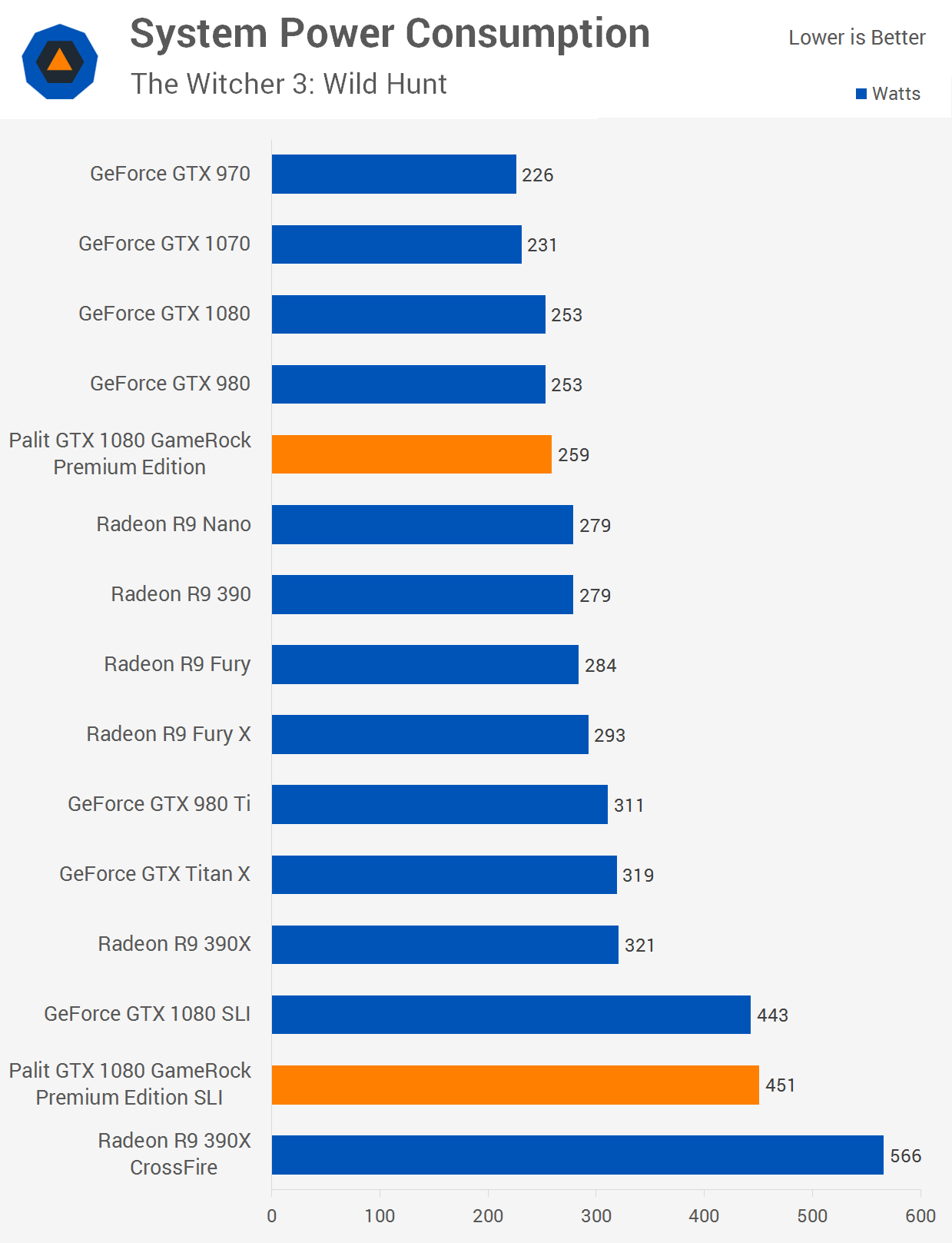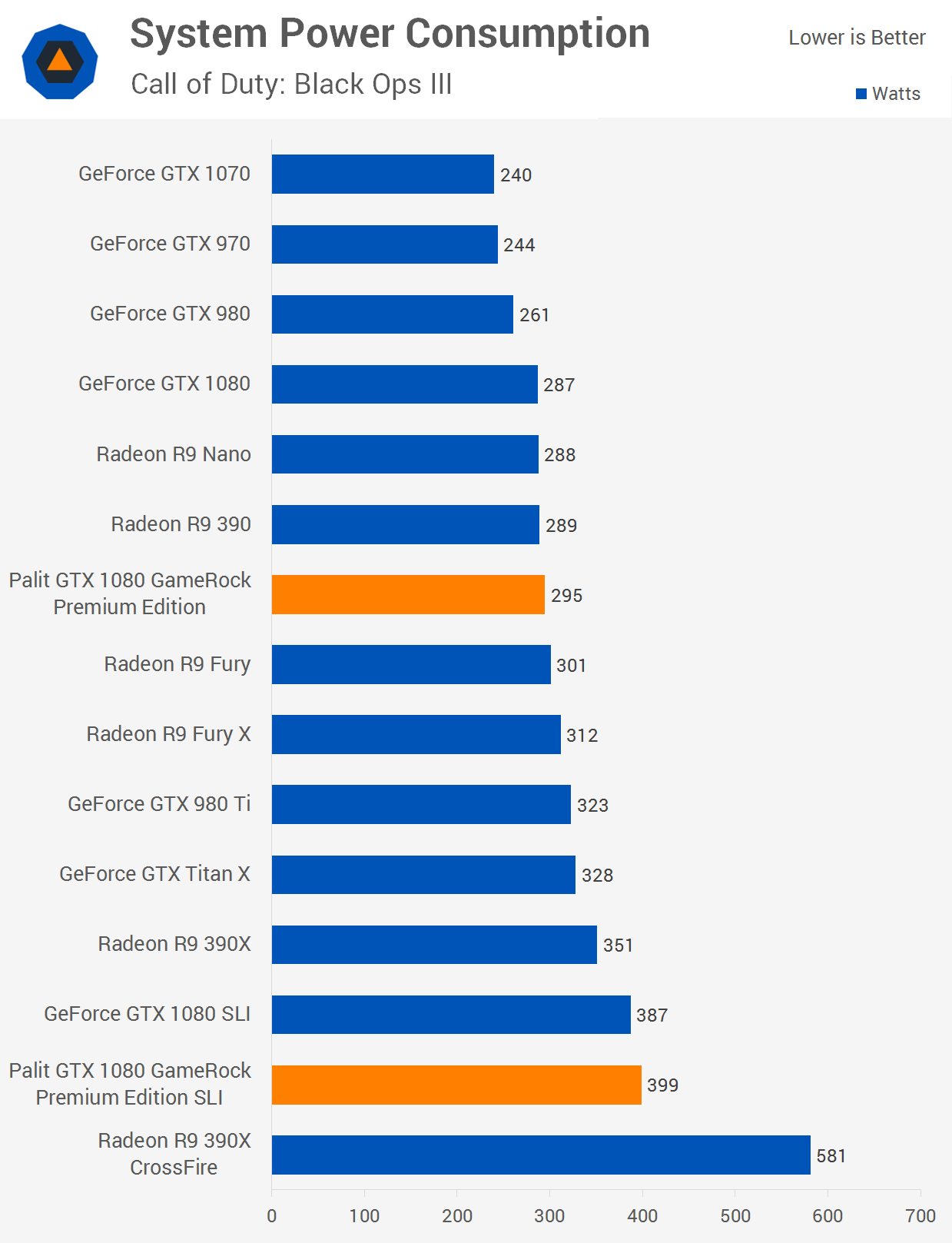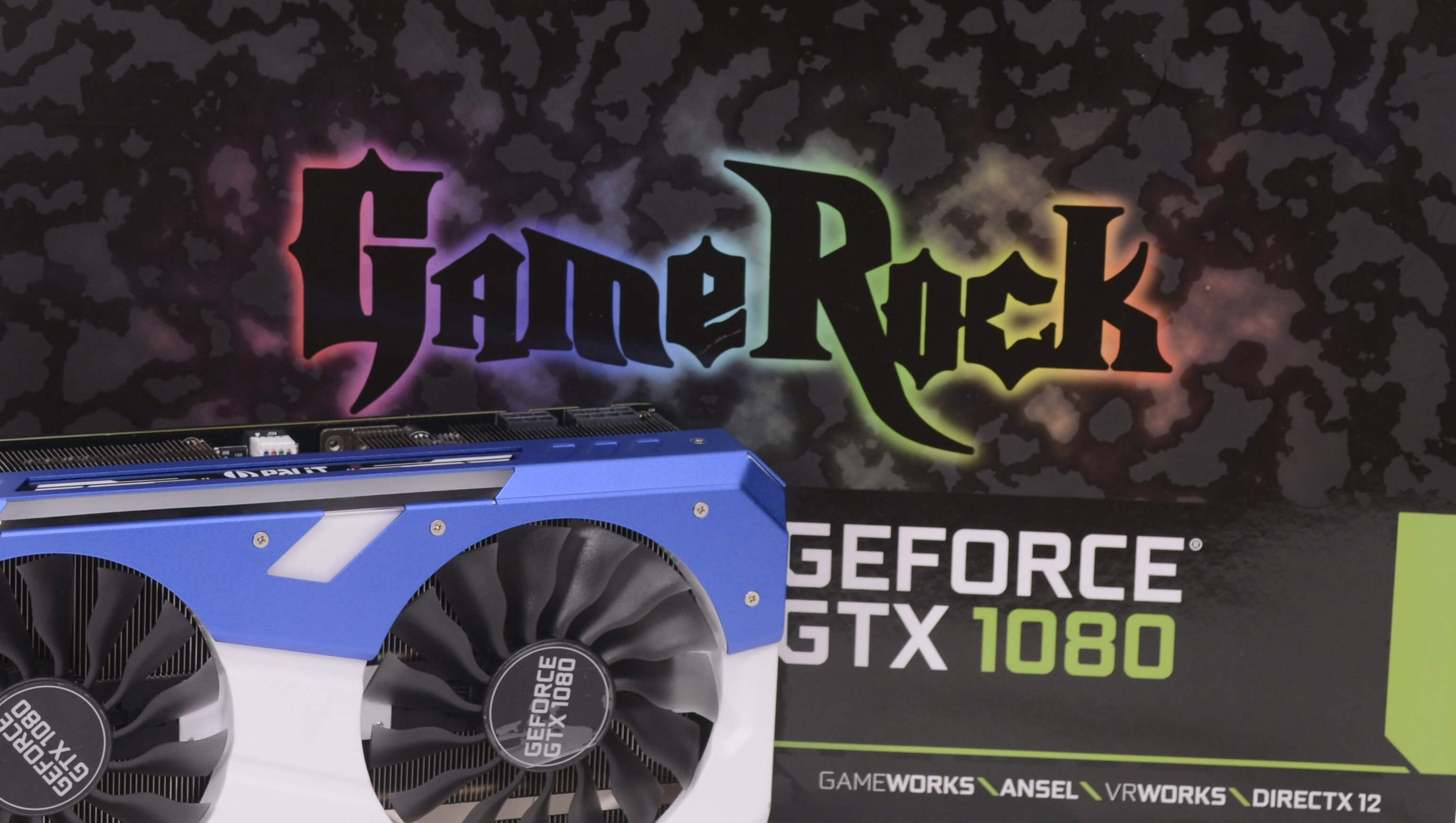Power Consumption, Wrap Up

Power consumption is typically one of the biggest drawbacks of running multiple GPUs, as gamers will need to spend quite a bit of money on their power supply to ensure power is delivered under heavy load. Take the Crossfire R9 390X cards above, for example. We see that they are approaching a total system load of nearly 600 watts. This calls for at least an 800-watt power supply and a quality one at that. And that's not even considering the long-term power consumption costs.
Meanwhile, the GTX 1080 SLI graphics cards consumed well under 500 watts, so it is possible to get away with a decent 600 - 700 watt power supply, even with the factory overclock on the Palit cards.

Here we see that when benchmarking with Call of Duty Black Ops III, where SLI does scale well, the Palit GTX 1080 GameRock PE SLI cards only pushed the total system power consumption 35% higher over the single card configuration. That is over 30% less power than the same system using Radeon R9 390X Crossfire graphics cards.
How Sweet Is It to Run Dual GTX 1080s?
When the covers were taken off Nvidia's brand new Pascal flagship a few weeks ago, there was one key question on our minds: do we finally have a single GPU capable of 60fps 4K performance?
Even though some settings can be tweaked to boost performance and achieve the desired 60fps with a single card, I, like many, longed for a no-compromise solution. One that didn't require more multiple GPUs and didn't cost over a thousand dollars. For the most part, the GTX 1080 delivered, but there were a handful of titles where tuning was still required, like in The Witcher 3.
Adding a second GTX 1080 means you aren't just achieving acceptable performance... you are getting outstanding performance. A graphics-intensive game like The Witcher 3 looks incredible at 4K and with a pair of GTX 1080s we enjoyed an average frame rate in excess of 80fps.
Though we mostly focused on games that support Nvidia's multi-GPU technology, these also happen to be some of the most popular PC games released as of late. On average SLI enabled 63% more performance – or 71% if we ignore Ashes of the Singularity. We'd call that a solid score for SLI scaling.
Granted, this may not convince many to spend another $600+ on a second GPU but in a good number of scenarios at 4K, it pushed performance from playable to smooth-as-silk.
Overall, while I'm not generally a big advocate of multi-GPU technology, it does make sense here assuming that you can afford it. The 4K gaming experience delivered by these cards is the best I have seen yet. For those willing and able to drop four figures on this GPU configuration, you won't be disappointed with the results.

